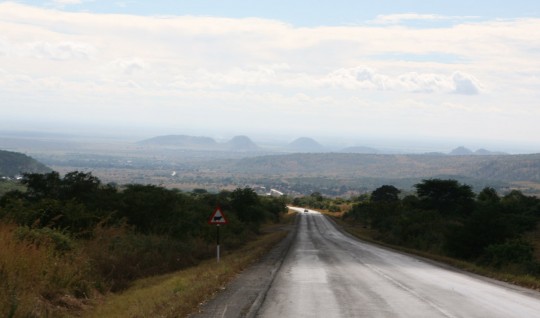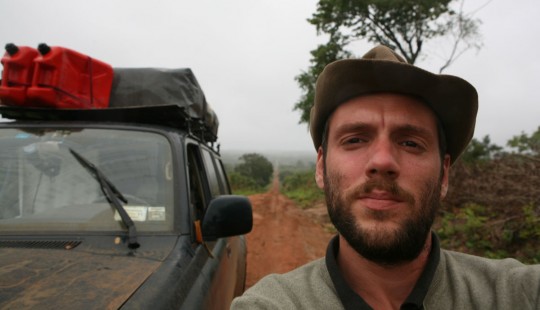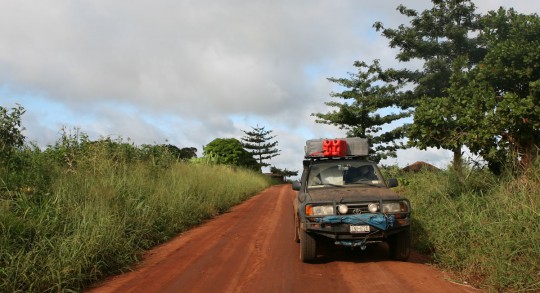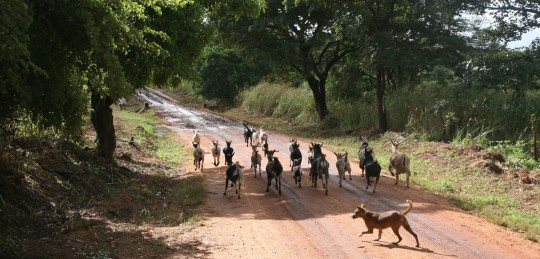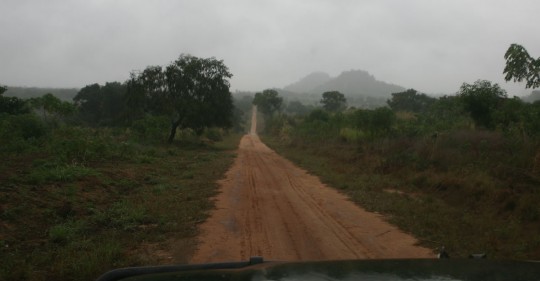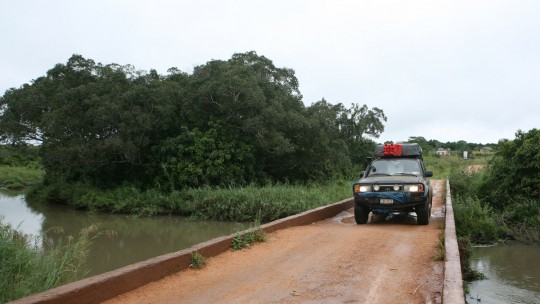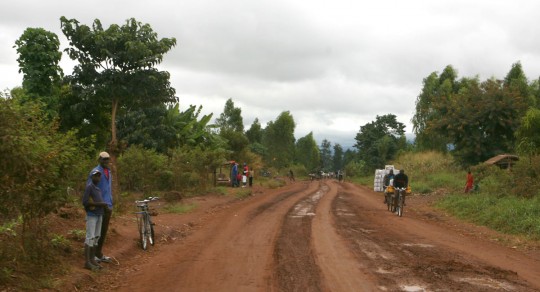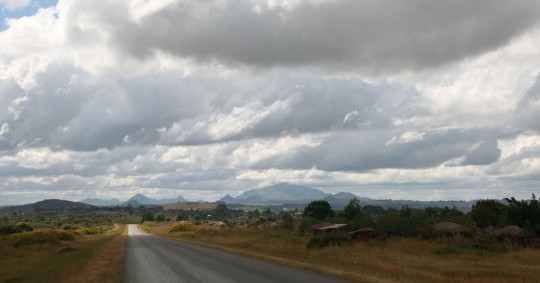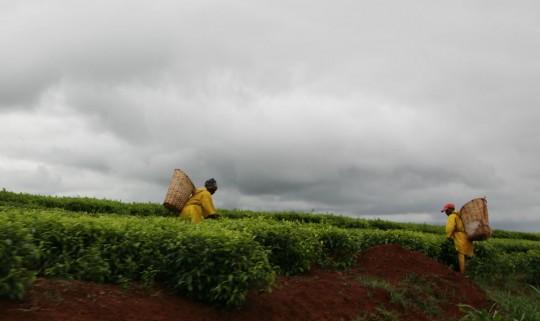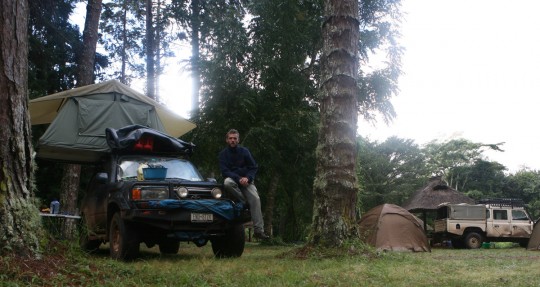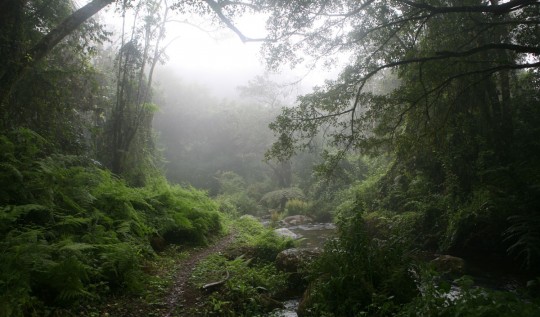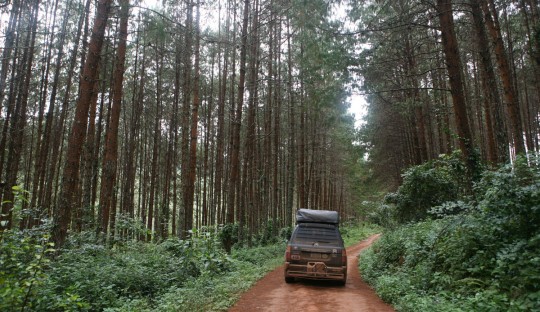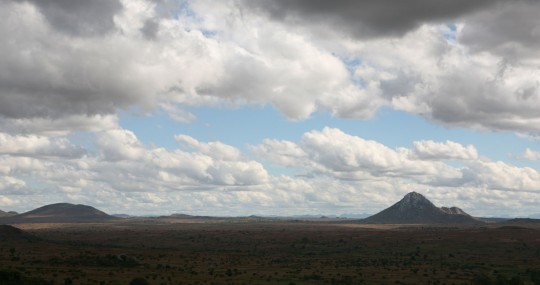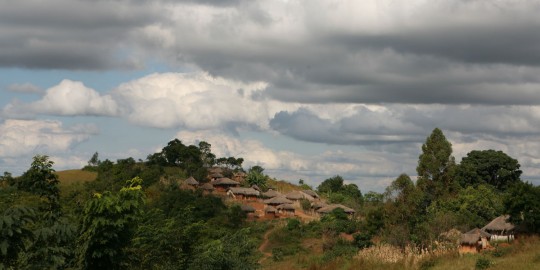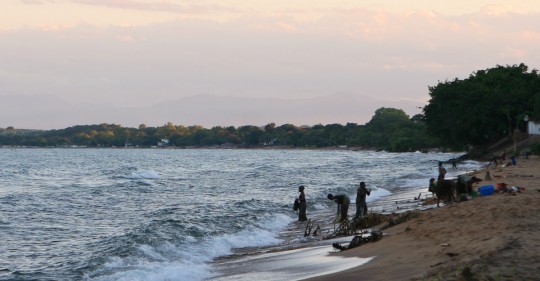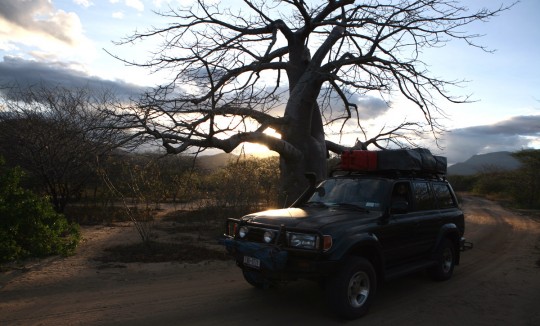
Every day in Malawi, I drive few hundred kilometers north and follow the lake. The progress is slow, due to the frequent police checkpoints and a multitude of villages where it is more prudent to slow down to 25 mph (40 km/h). Roads are not wide, and marketplaces bring many people on the tar.
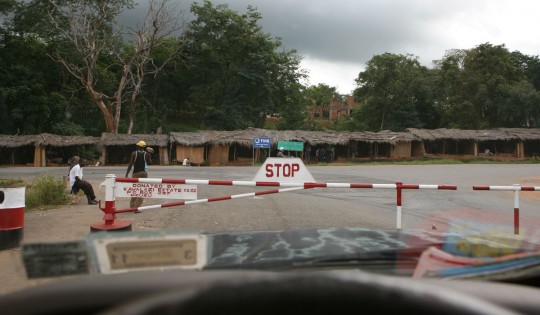
The police usually demand few documents, which I all have thanks to the dead time I had in Durban and some work in Photoshop. They sometimes make an attempt to say I was speeding, but usually don’t insist when I deny it.
In the afternoons, I stop in camp grounds easy to find on the shore of the Lake. It costs around US$ 4 a night, which is a good value compared to the cost in South Africa and Mozambique. There I spend time planning the following days, and list accommodations on the map.
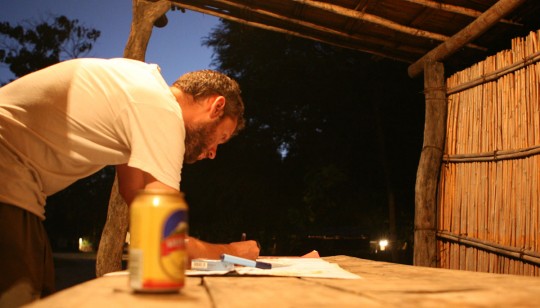
I spend nights in Kande Beach and Chiweta. Some camps are pretty basic, while other offer electricity and hot water. Internet is not available, unless you are willing to spend a lot of money to get satellite access. I cook every night using the food I got in Blantyre. It is difficult to get more than very basic items in the few shops along the road. Cooking for myself ensure that I get a balanced and healthy diet. I boil the water I use to cook, and put bleach in my non-drinking water to wash vegetables or brush my teeth.
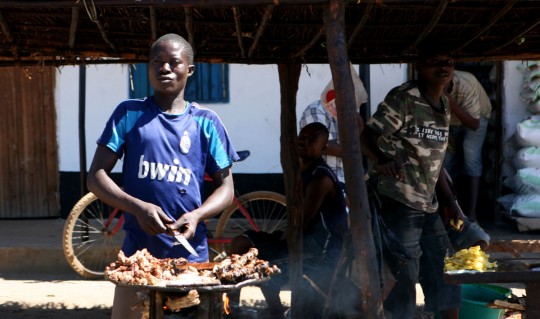
The roads are in good conditions and it is a nice change from Mozambique. Gas is expensive though and I will have to wait for the Middle East to get more reasonable prices. It is now my biggest daily expense. Unfortunately, I have rare exchanges with people. It is very difficult to have a normal conversation, as locals usually want to sell you something, and the cultural divide is huge. I believe many months in Africa would be necessary to be able to gain from exchanges with people. Don’t take me wrong, everybody is nice, and curious about the place I come, why I am doing this trip and they all want to know the price of diverse items in the U.S. They also always want to exchange mail addresses. Maybe I will one day receive some news…
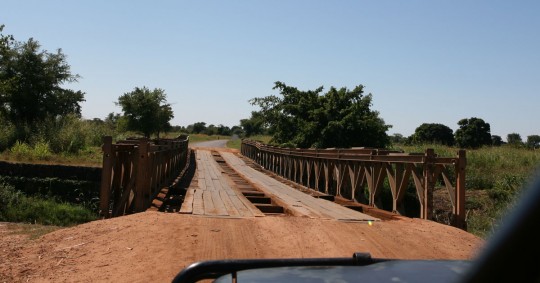
As I advance north, there is a more mountainous landscape, and some forests. I recognize rubber trees which inhabitants milk after cutting the skin of their trunks.
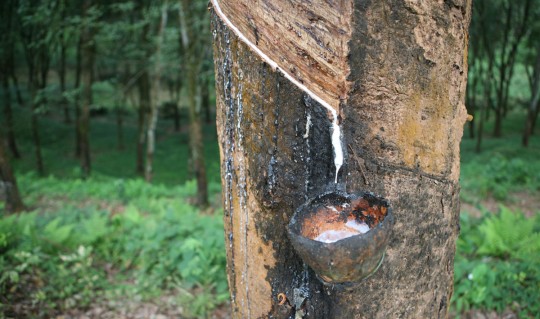
The landscape is indeed more interesting up there, and I get better nights of sleep as the temperature is lower during the night. As I know I will spend some time in higher altitudes, I take some time to change my rear brake pads, which I bought back in Texas. I doubt I would have been able to find parts in this part of Africa, as I don’t see many Land Cruisers on the roads. As in South Africa, there are many used vehicles coming from Japan, and also the group Tata seems pretty successful with their trucks.
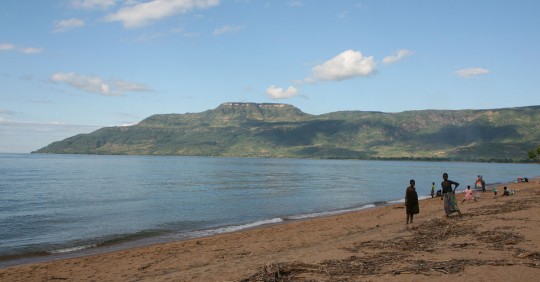
Very few individual vehicles are in fact seen on the road, mostly buses and trucks. People here use bicycles as the main transportation mode, very often just pushing a bike loaded with goods.
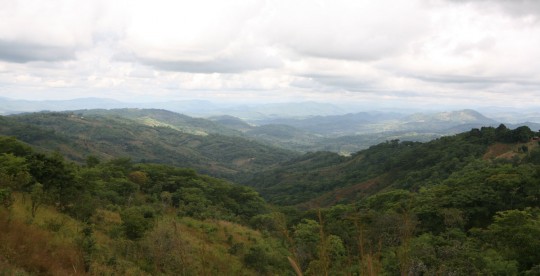
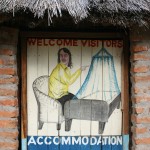
The last campground I stay at has no showers, no electricity and fence, which makes me wonder why I just don’t sleep on the border of the road (Where it is located as well…). It is time for me to go to the next country. Tanzania.
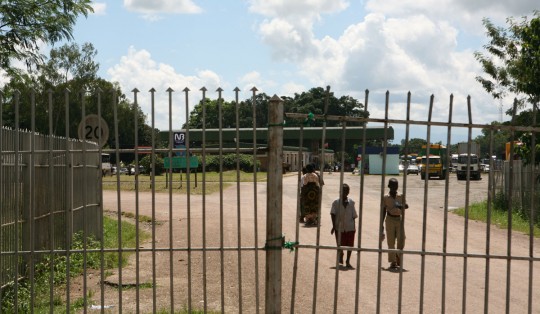
When I get to the border, it is a little bit trickier than previous crossings. In fact, it’s just a question of money. The Tanzanian authorities want some cash. At first, they ask me US$50 for a visa. I find it too expensive, and I wonder if it is a scam. I can’t remember how much it is supposed to cost. So I tell them it is too expensive, and have to sit down with the chief who finally agree to bring down the cost to US$30. Later, when I look into my notes, I figure the visa is indeed supposed to cost $50. In addition, they want me to pay US$25 for road tax. I don’t have enough US dollars easily accessible, so they agree to let me pay US$5 for a week worth of the tax. I can later go in a city to pay more to extend. Or not.
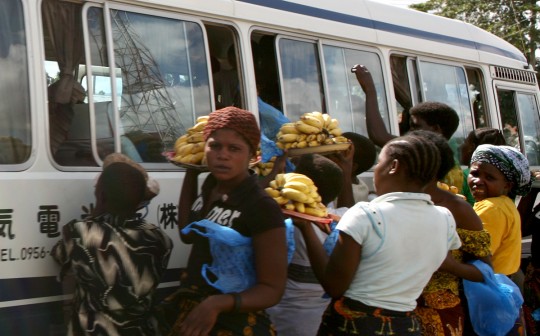
Once again, I have no currencies for this new country, and almost no gas left. In the first town I stop, I can’t get cash at the ATM. I have to try to get to Mbeya with the fuel I have left. And I reach the city, probably running on gas vapors. There I am able to get cash, fill up the tank and an additional jerry can I usually keep with me full at all time. It cost me almost 200,000 Tanzanian Shillings. Sounds expensive…
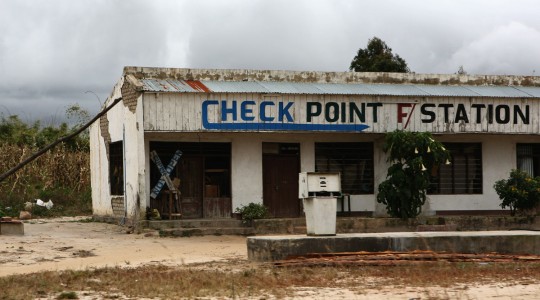
Later on, I get to a church-run center where they let me camp for a dime. The following day, I will take the direction of Dar Es Salaam on the long northeastern road through the low mountains.
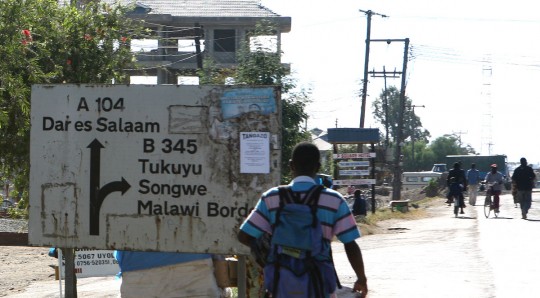
I leave in the morning and begin my trip through the wonderful landscape. I changed time already, and I am now at GMT +3. I have tons of things to do in the large city, mostly visas, and I hope everything will go well. As I am driving, I try to remember everything I need to get done. This does include stopping at the French embassy for my passport problem, get the Ethiopian visa, which I can’t get at the border as I usually do, and also spend some time on internet, so I could reply emails and update my blog.
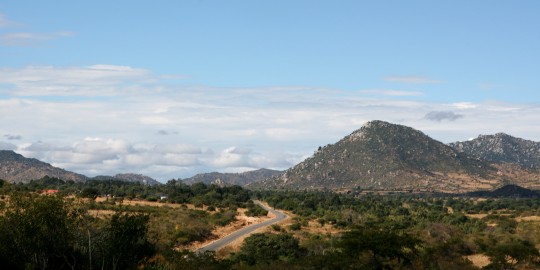
The trip to the city should take me two days at least. The road is sinuous, and there are an impressive number of accidents. I pay extra attention and prefer to go slow than to finish down the mountain.
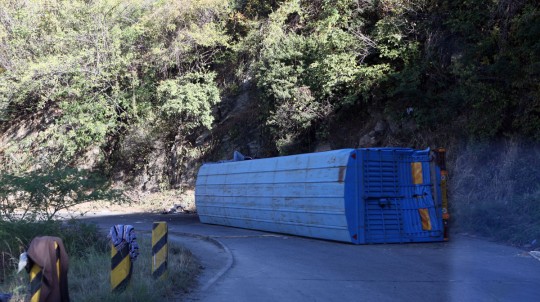
At the end of the day, I stop close to Mikumi, in a campsite surrounded by baobabs. I am the only visitor there, and decide to use the restaurant of the camp. After all, I don’t have anymore food left, and definitely deserve a nice meal. In the morning, I decide to stay an extra day to wash some clothe and prepare my visit to Dar Es Salaam.
